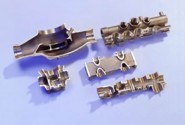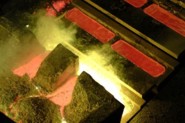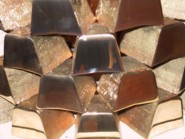BRASS (CuZn)
History
In ancient times, zinc was used in the production of brass, primarily in the form of zinc spar as an alloy ingredient. The brass formula of two thirds copper and one third zinc was already known to the Babylonians and Assyrians 3000 years BC. First written reference to zinc copper alloys is made by Homer (8th century BC) and the Greek scholar Aristotle around 330 BC. Today, common alloys contain between 5 and 45 percent zinc. |

|
|
Characteristics
The colour of brass varies from golden yellow to golden red, depending on the copper and zinc contents, and is ideal for many different applications. Current European standards list about 60 different alloys for various physical, chemical and technological requirements. Fine-grained brass has also been produced since the end of the '70s. This free-flowing material allows for the production of top quality parts with highly complicated inner structures, with guaranteed polishing ability. Fine-grained brass today is also used as dezincification resistant brass (DZR), low-lead and nearly lead-free brass. Special brass alloys which can contain high levels of aluminium, iron, nickel and manganese have excellent properties including high structural load rating and resistance to seawater. Another outstanding characteristic of brass is its antibacterial effect, which is not present in other materials. This makes it ideal in particular for hand rails, door fittings, etc. |
|
|
Applications / Products
Brass is found in a daily context in sanitary fittings where great demands are made of surface quality, in water, gas and central heating fittings, gear wheels, ball bearings, ships' propellers and fittings, special housings, door fittings and constructional parts. The outstanding properties of products made of brass include high strength with good ductility. They also have high corrosion resistance to water, steam and numerous liquids. |




